
Behavior charts are very useful tools for motivating children to improve behavior, do homework and complete chores. As charts are visual, it makes it easy to communicate what behavior you are targeting for change, and to track progress. Being able to earn a reward (that you both agree upon) is a great incentive for most kids. A reward program with behavior charts is particularly helpful for children with ADHD – who need extra motivation in order to keep up the effort to achieve goals.
There are two websites I recommend that are a great source of behavior charts and other tools for parents. Both provide a huge variety of FREE charts (e.g., behavior charts, chore charts, daily routine charts) as well as behavior contracts, goal sheets, reward certificates and coupons, and tons more. They have charts appropriate for kids of all ages ( toddlers through teens).
Together with the charts you can set up a reward program for improving your child’s specific problematic behaviors such as: getting ready in the morning for school, picking up clothes/toys, reducing whining and interruptions, sharing with siblings.
The following are two sources for free charts you can download, print and use to motivate your child (or student) to achieve goals. These websites are well-worth exploring.
In addition to their charts, KidPointz has a free online points and reward system. They also have an iPhone app for rewarding good behavior on the go, if you wish. This website has a wealth of free resources that parents (and teachers) should find helpful.
Here are some examples of a few of their charts:
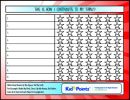




This website offer a great selection of behavior charts in numerous categories such as: chore charts, step-by-step charts, homework/school charts, single behavior charts, goal setting charts. They have charts with themes and graphics including Superheroes, NFL, NBA, Popular Book Characters, Popular TV/Movie Characters and lots more. There are also several tools for teachers to use with individual students. Below are a few examples:
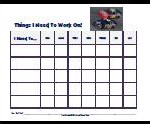
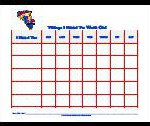

Note: For my free downloadable ADHD management charts and forms, click here.
Tags: ADHD management charts and forms, behavior charts, reward charts, Rief
Comments (0)

To get your son or daughter in gear for this new school year, now is the time (if you haven’t already done so) for getting organized. This is important for all kids, but particularly so for those with ADHD and/or Learning Disabilities. Help your child be ready and off to a fresh start with these tips:
Clean Out the Old
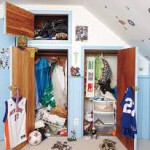
Make sure your child’s room is organized. Hopefully, you’ve been working on this project during the summer. But, if not…together with your son or daughter, go through desk drawers, closets, and cabinets. Sort through all of the previous year’s school papers and projects. Determine what can be dumped or recycled, and what is to be saved. Take advantage of today’s technology, by taking digital pictures for an electronic portfolio of your child’s save-worthy work, art, and projects from last school year. Then, store in labeled boxes or files just the most valuable items you want to keep.
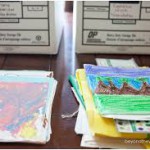
In With the New
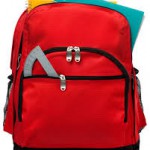
Whether they look forward to going back to school or not, shopping for new school clothes and supplies is exciting for almost every child. Many schools provide a list of required or recommended school supplies for parents to purchase, or teachers may send home such a list. When buying the basics and required items, motivate your child by buying when possible his or her choice of backpack, lunchbox, and other school supplies (as long as they are user-friendly for your child’s needs).
Discuss and Plan the Homework Area

Now is the perfect time to explore different homework area options and create with your child a homework station/area that will be appealing to your son or daughter. There are so many creative ideas for setting up homework stations within your child’s room, another area of the house, and portable ones that can be found on my Pinterest board – Home Organization-Homework Areas.
Tags: ADHD, back to school, homework areas, Learning Disabilities, organizing tips, Rief
Comments (0)
Research shows that there is an approximate 2 month loss of math skills for most all kids over the summer when they don’t practice and use math. There are many ways to prevent this “summer slide” and boost your child’s skills through math games, motivating ways to practice, and activities that involve “real life application” of math during the summer.
Math Games and Puzzles

ONLINE MATH GAMES
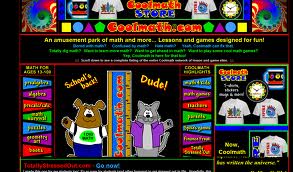
My blog entitled “Fun and Free Interactive Online Math Games” shared some of the free educational online math sites that I recommend. These games are a very motivating way for kids to be mathematically engaged and challenged. Besides those three websites I featured in the blog (FunBrain, Math-Play, and CoolMath4Kids), here are some additional ones that are worthwhile exploring: Sheppard Software, Fuel the Brain, Turtle Diary, Mr. Nussbaum, Math Cats, and PBS Kids.
BOARD, CARD, AND DICE GAMES
Although there are so many math games that can be played via computer, tablet, or iPhone, I don’t think anything can replace the face-to-face interaction of board games, card games, and dice games.

Traditional board games, such as: Monopoly, Dominos, Trouble, Mastermind, Othello, Chess, Uno, Battleship), Card games (e.g., Crazy 8s, Rummy, War), and any games with dice – are great for sharpening a host of skills ( e.g., problem-solving. logic/deductive reasoning, sequencing, spatial relations, mental math, counting, arithmetic) while having fun. Playing such games can strengthen concentration, sustained focus, rule-following, cooperation, and social skills (e.g., taking turns, sportsmanship). Have your child be the scorekeeper or banker when possible (or share the role).
There are so many board games besides these “oldies but goodies” I mention above. You may want to check out this list of “best board games for all ages” by Education.com that includes the newer games on the market that you may not be familiar to you.
Check these two links, as well, from my daughter-in-law’s blogs on Teacher Resources for Parents for some great card and dice games for building math skills:

Family Fun Math Card and Dice Game
A Fun Basic Math Game with a Couple Decks of Cards – describing the game “Math War” and its variations (Basic War, Addition War, Advanced Addition War, Subtraction War, Place Value War, and Product War).
MATH PUZZLES

There are different math puzzles that may motivate your child. Sudoku, for example, is a very popular number-based logic problem-solving puzzle. Jigsaw puzzles are great for building spatial awareness, attention to details, and other skills that have math benefits. Cool Math 4 Kids has lots of math puzzles and “brain benders” for kids of all ages on their free website.
Online Math Programs (not games) for Learning and Practicing Math Skills
IXL for students K-8 is a math-practice website with unlimited practice questions on hundreds of topics for each grade level. The questions also adapt to your child’s ability, increasing in difficulty as they improve. The system measures how much time your child spends on any particular skill once they complete a skill
AAA Math is a free site for thousands of interactive arithmetic lessons for kids K-8th grades. Unlimited practice is available on each topic. Immediate feedback prevents practicing and learning incorrect methods.
Mathletics A motivating online math program for homes and schools.
Dreambox Learning Math combines a rigorous math curriculum with fun online lessons that adjust to the way your child learns.
Webmath is a math-help web site that generates answers to specific math questions and problems, as entered by a user, at any particular moment. The math answers are generated and displayed real-time, at the moment a web user types in their math problem and clicks “solve.” In addition to the answers, Webmath also shows the student how to arrive at the answer.
Real Life Math Applications

There are so many ways that everyday activities are opportunities to use and strengthen math skills.
- While waiting for appointments, standing in line, driving in the car, and other opportune times, pose math questions/challenges for your child to figure out (preferably mentally). For example, in line to purchase tickets at the movie theater or prior to going to the theater, ask questions such as: “For this movie an adult ticket costs $9.50 and a child’s ticket is $7.00. How much will our 3 tickets cost? If we want to also buy 2 small popcorns to share, what’s our total cost going to be with tickets and popcorn?”
- Similarly, at restaurants you can: have your child estimate how much the meal will cost, have your child calculate the total by looking at the prices of the items ordered on the menu and then checking for accuracy when the bill arrives (with or without tax included).
- Have your child count money and practice making change.
- Shopping: When you go to the store with your child ask questions such as: We need 3 jars of this tomato sauce ($2.25 per jar). How much will those 3 jars cost? What’s your estimate of the total cost of these 8 items in the cart? Then compare the estimate with the real price (using a calculator or waiting until checking out and seeing the receipt).
- Any kind of budgeting – saving money for a special purchase they want can provide valuable math practice (e.g., How much do I need to save up ? How much more do I still need?) Have your child do a search for the best price of the product or watch for sales. Figure in tax, as well.
- Have your child help you in cooking, building, or anything involving measurement. Give your child practice measuring with rulers, yardsticks, metric sticks, measuring cups and spoons, tape measures, and other measurement tools.
- A lot of art activities involve math (e.g., geometric shapes, lines and angles, patterns, symmetry). The same is true for any construction/building and making creative designs with Legos, Magnetiles, blocks, etc.
- Cooking and baking provide numerous math learning opportunities (e.g. measurement, working with whole numbers and fractions, figuring out equivalent fractions), as well as reading and writing. For example, your “chef” can help you in planning a meal and writing the shopping list. Bring your child to the grocery store and help locate the ingredients, read labels, and other such activities. Then, of course, comes the actual cooking and baking. In addition, your child may want to design and write up a menu, etc.
- On any car trips, your child can be given math challenges (depending on age/level, of course). For example: to estimate and then calculate the distance and mileage, cost of gas if they know miles per gallon on your car, and so forth.
We have a list of 80 activities found in our book How to Reach & Teach All Children in the Inclusive Classroom, 2nd Edition, by S. Rief & J. Heimburge. Here are 8 examples from our book:
SURVIVAL MATH ACTIVITIES – EXPERIENCING MATH IN YOUR EVERYDAY LIFE
- Prepare a grocery list with your parents. Go to the store with your parent or online. Select 5 items and do a comparative price check (different brands, making sure weight on the package is exactly the same or a very close match.
- At restaurant ask for bill and check to see if added correctly. Figure out how much tip should be given.
- Keep a record of how many miles your family’s cars travel in a 2-3 week period. Record mileage, find the average.
- Find out how much each of the major theme parks cost in your state. Figure out admission prices for your entire family.
- Keep track of the scores of your favorite baseball team for 10 games. List each of the games, who played, and the score. Figure out the average number of points the team scored during these 10 games overall (mean). Identify the median score and mode.
- Find out the cost of season tickets for the next season for your favorite pro or local college football team. Compare the price of the most expensive seats and least expensive seats for your family. How much does parking cost at the stadium? How much is that altogether for an evening at a sports event?
- Measure your bedroom (length, width, perimeter, area. Decide how many square feet of carpet you need or border around the room.
- Find out how much it costs to camp overnight for your family at one of your county or state parks. Also, how much does it cost at local tourist type hotel where you live. Figure out the difference for a week of vacation at both places.
MORE MATH IDEAS
I have a bunch of great math strategies and activities for kids of all ages posted on my Pinterest board. Parents and teachers will find a lot of motivating and fun math activities here.
Tags: card and dice games, math activities, math games, math puzzles, math skills, parent tips, Rief, summer slide
Comments (0)

“But I don’t know what to write about.” How many of you have heard that from your child when given a writing assignment from school? Finding a topic of interest that sparks the motivation to launch into writing is a challenge for most of us, and is key for reluctant and struggling writers.
A very worthwhile strategy that will serve your child well now and for many years to come is to encourage the use of a writing journal for recording all sorts of random things that may potentially be used in the future. The journal can be a notebook, card file, folder, digital document, or other format…it’s your child’s preference.
My oldest son Gil, a professional comedy writer, has always had lots of creative ideas, curiosities, and humorous observations. Since childhood he has had the great habit of jotting those things down (e.g., on a notecard in his pocket, or now on his smartphone’s notepad), which is later transferred to a notebook or file. Those files are like a literary treasure chest because you can always dig through these random ideas and every once in a while find a real gem. This writing journal or file is a perfect place to look for topics to write about when needed…a memory jogger of your thoughts, experiences, and interests over the years.
You can truly facilitate this by paying attention to your child’s creative ideas, interesting questions and observations, anything they find fascinating. Suggest that they record it in their journal. If your child is too young or resistant to writing it down…you can do it for them. The summer is a perfect time for starting such a journal, encouraging its use, and beginning to develop a very beneficial habit.
GATHER “SEED” IDEAS

Some of these “seed” ideas may be developed and grown into full potential writing topics at some time in the future. They can include anything, such as:
- hobbies & interests
- places visited
- jobs they have done
- something they heard that was interesting or funny
- a particular experience, person, or event that was memorable or taught them a lesson
- observations, wonderings
- funny, silly, weird incidents
- scary or stressful happenings
- a prized possession or something owned with a history
- a family tradition
- a creative game/activity with friends
- something that was once a challenge for them that they overcame or conquered
- colorful and interesting people
- special trips or activities
- pets (one they have now or had in the past)
- favorites (movies, music, books, artists) and connections made
- reactions to events in news
- controversial topics or something in the news that sparks a family discussion or debate
- things they are curious about (e.g., how to make a go kart, ponies, how to train a service dog, storm chasers, how something works)
- inspiring or humorous quotes
- links on the internet to articles read and good sources of information of interest
- any curiosities and things they find fascinating
The journal can also be in the form of a collage with pictures, words, phrases related to any of the above – cut out from photos, magazines, newspapers, anything printed from the computer, then mounted on pages of the notebook or folder.
Support Your Child’s Effort

- Suggest ideas as they come up to jot down in their writing topic notebook/file.
- Use your summer outings, and encourage adding those to the journal of potential topics. Talk through and help your child expand upon experiences and observations on those outings. For example, a day at the beach can include a list of activities (e.g., swimming, boogy boarding, surfing, jumping in the waves, playing frisbie, building sandcastles, digging tunnels in the sand, collecting seashells), observations (e.g., different marine life, colorful people, sea gulls and other birds, things found washed ashore, other sights & sounds of the ocean).
- Write or type the ideas your child shares if your son or daughter is resistant to doing the recording and welcomes your help.
- Go through family photo albums when you have time with your child and talk/share stories about people, places, and events in the photos. Sharing these memories can also trigger great potential writing topics.
- See “Summer Tips for Helping Your Struggling/Reluctant Writer (Part 1)” for more journaling ideas.
See my other writing-related blogs and articles: Summer Tips for Helping Your Struggling/Reluctant Writer (Part 1), The Wonderful “Post-It Strategy” from Writing Fix, Why Writing is Often a Struggle for Students with ADHD and/or Learning Disabilities, How to Help My Child with Writing – Home Supports. See my Writing Strategies & Activities Pinterest board for lots of great writing ideas. My books also have many writing strategies and tips for parents of kids with writing challenges.
Tags: children's writing journals, journal, reluctant writers, Rief, seed ideas, struggling, summer learning tips, writers topic notebook
Comments (0)

by Sandra Rief
For kids who resist writing because it is difficult for them (as is the case for many with ADHD and/or Learning Disabilities), it is not easy to motivate them to write over the summer. During the school year much of what students write are assignments from their teachers that address various genres of writing that need to be taught (based on their grade level standards). For example:
- Informative/explanatory pieces – examining a topic and conveying information about it clearly
- Persuasive essays or letters on topics –backed up with facts, evidence, and solid reasons to support an argument
- Personal narratives – about events that took place in their lives
- Short research projects
But, the summer is an opportunity to engage your child in writing for their own purposes and to discover that writing can be fun.
Here are 25 ways to motivate your child to engage in writing activities during the summer months:
Scrapbooks, Journals, Albums

- Scrapbooks and Albums – Have your child create a scrapbook or album of pictures and then write captions for the pictures. Other items can also be included in the scrapbook or album (e.g., ticket stubs, maps, brochures) of places they go over the summer. The scrapbook can be a springboard to then perhaps be motivated to write more than captions (e.g., a paragraph or so about one or more of the pages in the scrapbook/album).
- Journals – Buy your child a nice journal to decorate, and then encourage writing in it daily…about anything (a game played with a friend, a movie seen, places they want to go). There are different kinds of journals and ways they can be used. For example: as a personal diary of thoughts/feelings, a travel log (writing about places seen or experiences on any trips or outings), a photo journal (drawing or printing and mounting a photo per page and writing something related to the picture), a back and forth journal between you and your child. For this, you write something to your child (e.g., positive comment or message, something funny you want to share) and end your entry with a question. This gives your son or daughter something concrete to write about – responding to your question.
Write to Perform

Your child may be motivated to write something that will be performed for an audience (you and other family members/friends, out-of-town relatives via Skype) . Here are some possibilities:
- Write and perform a skit or puppet shows.
- Create a dance but plan and record in writing the steps.
- Create a powerpoint presentation on a topic of interest to share with an audience.
- Compose a song and write the lyrics.
- Sing a song and copy the lyrics first.
- Write jokes for a stand-up comedy routine.
- Make a video but first plan it out in writing.
- Write a poem.
Correspondence

- Email to relatives or friends.
- Write a blog or have your child contribute to a family blog.
- Write letters to friends, relatives, penpals.
- Write to celebrities, organizations or businesses. (Your child may receive autographed pictures of celebs, information or various freebies from businesses, public offices, and organizations when requested.)
Lists, Lists, Lists

- Encourage your child to make lists or make a game out of listing things: mammals, books read, favorite songs, car models, baseball teams, party games, words that rhyme with…, favorite TV shows, 3 and 4- syllable words, things they want to pack for an overnight or trip, games and activities to play when their friend comes over, shopping wish lists, movies they want to see.
Book Making

- Encourage your child to create their own books. Have your child illustrate pages and either write or dictate what they want written on each of the pages. Encourage your child to participate in the actual writing to the extent that they are willing to do (e.g., helping you spell at least some of the words, copying the words from your model, typing the words in whatever font they want, printing, and pasting the text onto the book pages). Bind their books in various ways.
- Explore some of the book making apps available to motivate your child to write their own stories or books. A few include: StoryKit, Book Creator, and Scribble Press.
Persuade Me
- If there is something that your son or daughter has been “bugging you” about (e.g., getting a pet, going somewhere or buying a particular toy or game), have your child try to convince you by researching and showing you in writing (at least partially) why that’s a good idea. For example, if your child has been begging for a dog, have her research and prepare a good argument with supporting reasons and information. Siblings with the same desire can work on this one together.
Some More Writing Ideas

- Design and decorate a menu and write out the items or choices for the meal.
- Create their own comic books or cartoons.
- Write poetry.
- Write comics. See these great resources for interactive online activities for grades K-12 on the ReadWriteThink website under Parent & Afterschool Resources. For example, Comic Creator invites children and teens to design their own comic strips. There are at least 50 activities and projects for each grade level that are motivating and tie in reading/writing.
- Motivate your child by providing cool writing tools (special pens, notebooks, and variety of paper).
- If your child needs assistive technology (e.g., voice recognition or planning/mind-mapping/outlining software), you may want to explore this summer some programs that would help your child. Check out these: Read & Write Gold, Kurzweil, Co-Writer, Write: OutLoud, Dragon Dictation, Inspiration and Kidspiration.
More Important Tips
3 of the best ways to encourage your child to write are:

1. Talk, Talk, Talk – This is a key pre-writing step that you can take to help your child in organizing ideas and getting started (major issues for kids with executive function weaknesses). Talking things out first is very beneficial – with whatever they write. Talk them through their ideas, discuss, and ask good questions (ones that probe thinking deeper about a topic and communicating clearly).
2. Be an Enthusiastic. Supportive Audience – It is important to show a sincere interest in their writing. Ask your child to read to you what they write. Be available to listen, and ask permission to read their work if they don’t want to read it aloud to you.
3. Tap Into Their Interests – Whatever your child is curious about and wants to explore further, provide opportunities and resources to do so. Then, encourage your child to write down a few things learned that can be shared with you (e.g., steps to making a project of choice, recipe your child wants to make, a “how to” book of cool experiments or tricks, 5 interesting things about a favorite athlete or recording artist). The best way to motivate your child to write (as well as read) is to find ways to hook them in through their interests.
Note:
This blog is part 1 on this topic of some ideas to hopefully motivate your child to do some writing over the summer, and be better prepared for the coming school year’s writing demands. See my other writing-related blogs and articles: Summer Tips for Helping Your Struggling/Reluctant Writer (Part 2), Why Writing is Often a Struggle for Students with ADHD and/or Learning Disabilities, How to Help My Child with Writing – Home Supports. The Wonderful “Post-It Strategy” from Writing Fix. There are hundreds of great writing ideas on my Writing Strategies & Activities Pinterest board. My books also have many writing strategies and tips for parents and teachers of kids with ADHD and/or Learning Disabilities.
Tags: ADHD, Learning Disabilities, motivating writing activities, parent tips, reluctant writers, Rief, struggling writers, summer writing tips
Comments (0)

by Sandra Rief
Is your child a struggling or reluctant reader? If so, getting your son or daughter to read over the summer is a challenge. Here are some tips, strategies, and resources that should help motivate your child to read and enjoy doing so:
Find Books of Interest
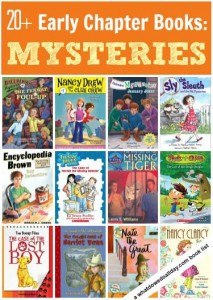
Finding the right books is key for capturing your child’s interest. Before heading to the library or book store, you might want to first check out some of the many lists of award-winning and “best” books for kids – what librarians, parent magazines, and others recommend as good books for kids of all ages and reading levels (e.g., chapter books, read alouds, boys’ favorites, girls’ favorites, Children’s Choice , Caldecott and Newbery award winners). There are tons of sources for recommended books.
Even if your child can’t read the books they want independently, provide other ways of letting them hear books of interest. Read them aloud to your child, read together (taking turns or having your child read any parts he/she can). Take advantage of all the audio books that are available and listening to the audio version of books. You can find just about anything in audio libraries. The public library has an extensive collection of audio books that can be checked out. You may want to look into these, as well:
-
Audible – a division of Amazon that has thousands of audible downloadable books for kids. There are other companies that also provide the same to customers.
-
Story Place – a children’s digital bilingual (Spanish & English) library site, which includes a collection of online texts
-
Tales2Go – an award-winning kids’ mobile audiobook service that streams thousands of name-brand titles from leading publishers and storytellers to mobile devices and desktops.
-
Storyline Online – an online video-streaming program featuring famous people (e.g., James Earl Jones, Betty White, Elijah Wood) reading books aloud to children. Kids can read along with the words visible or not.
There is no limit to the benefit of being exposed to good literature and the various writing styles of several different authors. This does wonders for language/vocabulary development, building comprehension skills, and providing a model for your child of good writing. So, struggling readers shouldn’t be limited in book choices – even if the books are far beyond their ability to read by themselves.
For Independent Reading

But, for independent reading it is very important that your child find “just right” books. This means books they can read without a struggle (with about 95% accuracy – knowing most of the words on the page). In fact, the general rule of thumb for determining if a book is too hard or “just right” is no more than 5 words on the page that are too difficult for them to read or understand. Encourage your child to do independent reading with these easy-to-read books. Doing so builds confidence as well as their reading fluency skills. These are the kinds of books that can be read and reread aloud ( to you, younger siblings, or anyone who will listen). It is also fun to practice oral reading by doing so into a recording device. Children tend to enjoy doing so and playing back to listen to their own recordings.
Not Just Books

Reading doesn’t mean just books. Lots of other reading material is available that may motivate your child to read, such as:
- Children’s magazines (e.g., Sports Illustrated for Kids, National Geographics for Kids)
- Comics
- Song lyrics
- Watching a TV show with closed captions (the volume muted or trying to follow along while listening)
- Directions or manuals for a new game or project they want to do
- Poetry
- Recipes
- Brochures and information about an amusement park, places they want to visit over the summer, or any possible activities as you plan your vacation days or upcoming trips
Reading Games & Activities

Your child may be motivated by some of the wonderful educational interactive websites that can be found online. These are just a few:
-
ReadWriteThink Go to the Parent and Afterschool Resources section and click on the grade level you need. Find lots of activities, projects, games, etc. to engage your child (for free).
-
Scholastic’s free interactive games and activities
-
Sports Illustrated for Kids – interactive website with articles on sports-related topics and lots of games, etc. Great way to get your sports-loving, reluctant readers to read.
-
Starfall is a great site to teach young children (until about 2nd grade or so) reading using a systematic phonics approach, in conjunction with phonemic awareness practice.
-
*There are countless games (board games, word games, and others) that involve reading and build reading skills. Many of those games that are good for strengthening skills in sight word recognition, phonics, vocabulary, etc. will be shared in a future blog.
Summer Reading Incentive Programs

You may interest your child in participating in a free summer reading incentive programs. Your local library may have one. Also, here are some others: Barnes & Noble, Scholastic Summer Challenge, Pizza Hut, Sylvan). You may also want to set up your own program with your child. Create a chart of some type, placing a sticker on the chart for each book read. Then, reward your son or daughter with a special prize or privilege upon completing the chart or reaching a certain number of stickers. Another option…you may encourage having your child track the number of pages read and providing a reward when x number of pages have been read.
Tags: audio books, book lists for kids, just right books, parent tips, reading games and activities, reluctant readers, Rief, struggling readers, summer reading
Comments (0)
Here are three recommended websites that are well worth exploring for their many entertaining and FREE, interactive math games to motivate your child to play and practice math skills during the summer (and all year long). Check out the websites FUNBRAIN , MATH-PLAY, and COOLMATH4KIDS .
The following are just some of the math games on FUNBRAIN:

MATH BASEBALL – In this game when a math problem is given, the child enters the answer to the problem and hits the “Swing” button. If the answer is correct, it’s a hit and FUNBRAIN decides if the hit is a single, double, triple, or home run based on the difficulty of the problem. If the answer is wrong, it’s an out, and the game is over after 3 outs. I like that the kids can pick the game (addition, subtraction, multiplication, or division) and level (easy, medium, hard, super brain).
Here are some of FUNBRAIN’s other math games for kids of all ages:
- BALL HOGS – Test your speed and math skills to scoop up the tennis ball before the opposing Ballhog does.
- BUMBLE NUMBERS – Drop the correct answer into the flower. Beware of the lightning bugs and dragonflies.
- CHANGE MAKER – the player must calculate the change given for a money purchase.
- FRESH BAKED FRACTIONS is a game to practice simplifying fractions.
- LINE JUMPER is a positive and negative addition and subtraction Number Line game.
- SOCCER SHOOTOUT to practice simplifying fractions
- MATH ARCADE – Arcade-style math games including Ball Hogs, Mummy Hunt, Bumble Numbers
For preschool children, there is FUNBRAIN JR with math games: Balloon Blow-Up, Water Slide, Mushroom Bounce, and Treehouse Builder.
This is a site full of free online math games that is very user-friendly and easy to navigate through. The games are categorized by grade levels (1st through 8th), with several interactive games practicing each of those specific grade level math skills. For example, under 4th grade games, you will find:

MATH RACING PLACE VALUE GAME

ADDING DECIMALS SOCCER GAME
BASEBALL MATH  ADDING & SUBTRACTING DECIMALS GAME
ADDING & SUBTRACTING DECIMALS GAME
 BASKETBALL MULTIPLICATION GAME
BASKETBALL MULTIPLICATION GAME
There are also many other interactive games to play for: addition, subtraction, multiplication, division, place value, integer, and equations.

COOL MATH 4 KIDS is just as its name suggests – a full site of hundreds of free, entertaining, very stimulating math games, puzzles, lessons and practice. It is designed for elementary and middle school students (skills from arithmetic through pre-algebra). Cool Math is for older students (13 and higher) with skills from pre-algebra through calculus. According to their site, CoolMath and Cool Math4Kids are used by thousands of students in classrooms and homes worldwide, and everything on these sites were designed “for the frustrated, the confused, the bored students of the world who hate math, for the students who just need to get through this stuff so they can reach their other academic goals, and for the math geeks of the world who love math and want more, more, more!”
Future blogs will share more math games, as well as strategies, fun activities and resources to help kids learn and practice skills and mathematical problem-solving during the summer (and throughout the year).
Tags: Cool Math, Fun Brain, interactive math games, Math-Play, online, Rief
Comments (0)

According to the research, all kids experience learning losses (on average 2 months in math) when they do not engage in educational activities during the summer. This is referred to as the “summer slide”. So, it’s important to make sure children are involved in learning and educational activities during the summer, so they don’t lose the skills they worked so hard to achieve.
To motivate your son or daughter to engage in reading, writing, or math activities and practice academic skills over the summer, it has to be fun.. Fortunately, there are lots of ways (entertaining and challenging educational games, activities, projects) to prevent summer learning loss and strengthen academic skills.
Today I had the pleasure of being the guest presenter of a webinar on “Fun Ways to Boost Your ADHD Child’s Academic Skills This Summer” for ADDitude magazine. I will be writing a number of blogs during the next two months on this topic – sharing lots of ideas and resources for doing so.
If you missed it, and are interested in hearing the free 1-hour webinar, you can click on the recording and listen to it here.
Tags: ADDitude, Rief, summer learning loss, webinar
Comments (0)

On Thursday, June 27, 2013 at 1 PM Eastern Time, I will be the guest for one of ADDitude Magazine’s free webinars. The topic of my webinar is “Fun Ways to Boost Your Child’s Academic Skills This Summer”. The summer months are an important break from the school year routine. But, it is important to keep our kids involved in educational activities to prevent summer learning loss, as well as strengthen skills. Fortunately, there are lots of fun ways to keep kids learning during the summer, as well as wonderful activities and resources to guide you in this effort.
My focus of this webinar (geared for parents of children 6-12 years old) will be on addressing:
- Strategies and tips for keeping your child academically engaged and happy during the summer
- Getting your reluctant writer to write through engaging activities
- Motivating activities to sharpen your child’s math skills this summer
- Strategies for building reading skills (word recognition, fluency, comprehension), and motivating your child to read
- Strengthening your child’s organization skills for next school year
- Websites of interactive learning games and educational activities for children
- Online educational resources parents will want to explore (many free materials) to enhance your child’s learning
If interested in this webinar, go to ADDitude’s webinar page for more information. I will also be posting a number of blogs during the summer on some of the topics above.
Tags: Academic Skills, ADDitude Magazine, ADHD, ADHD Expert Webinar, learning activities, Sandra Rief, summer educational activities, summer learning
Comments (0)
Handwriting is a source of frustration for many children (particularly those with dysgraphia). To get reluctant writers motivated to practice letter formation (print or cursive) correctly requires creativity, and needs to be fun. I share a number of “tactile” strategies for handwriting and spelling in my books for helping children with ADHD and Learning Disabilities, including such techniques as: finger-painting words using shaving cream on tabletops, or using pudding, whipped cream, or frosting on waxed paper or paper plates. Another tactile strategy is while sitting on the carpet, having the child write the letters/words on the carpet with two fingers using large muscle movements or playing the game of writing in colored sand or tray of salt with a finger or stick. These tactile strategies are motivating and fun, and also help make sensory imprints in the child’s brain of how to form the letters.
Without getting their hands dirty, there are other strategies using these “tactile” techniques. These are two apps by FizzBrain that I really like and recommend:
“Touch and Write ” by FizzBrain and Cursive Touch and Write. There are several different writing textures, including shaving cream, grape jelly, chocolate pudding, and more. While writing the letters, you not only see these textures, you also hear the actual sounds they make. Aside from the pens, there are also different papers to write on.
PINTEREST is another source of wonderful strategies. See my Pinterest board for Handwriting & Fine Motor skills at http://pinterest.com/sandrarief/handwriting-fine-motor-skills/ which contains the following three handwriting strategies, as well as many others:
GEL OR PAINT BAGGIES

Fill a freezer bag with a bottle of hair gel. Add food coloring and glitter. Mix together and have your child write the letters, numerals, or words. See this mom’s blog at Play at Home Mom LLC for how she uses this with her son.

To make your own paint bag writing tablet, put some finger paint or tempera paint into a sturdy freezer zip-top plastic bag. Seal it well and smoosh the paint around the entire bag. (You could even add a strip of packing tape across the top if you are worried about your child opening the bag.) Tape it to a table to keep the bag from sliding. See http://Lets-Explore.net/blog on Paint Bag Writing.
HIGHLIGHTERS

Words or letters can be written in highlighter for the child to trace over with a pencil. Starting points for letter formation can have a highlighted dot, and lines (top/bottom/middle) can be drawn with a highlighter to keep your child writing on and within the lines. You can also make highlighted boxes as a frame within which to write the letters or words. See Miss Nancy’s blog on the use of highlighting techniques.
The best program I have yet to find for teaching handwriting (for kids through 5th grade) is Handwriting Without Tears®, by Occupational Therapist, Jan Olsen. If interested in some of the handwriting and spelling strategies I have written about, see my books: The ADD/ADHD Checklist: A Practical Reference for Parents & Teachers, How to Reach & Teach Children with ADD/ADHD, Alphabet Learning Center Activities Kit, or The ADHD Book of Lists.
Tags: apps, cursive, FizzBrain, handwriting, printing, Rief, tactile
Comments (0)
« Previous Page —
Next Page »



















































